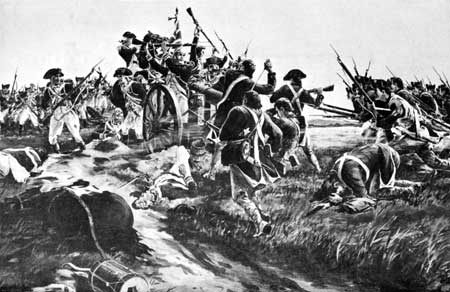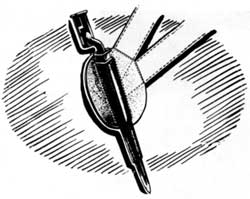|
GUILFORD COURTHOUSE National Military Park |
 |

The First Maryland Regiment charging the
British Guard at the Battle of Guilford Courthouse.
A reproduction by F.E. Buffmire from a painting by F.C. Yohn.
"Another such victory would destroy the British Army."—CHARLES JAMES Fox.THE BATTLE OF GUILFORD COURTHOUSE, fought March 15, 1781, marked the beginning of the end of the Revolutionary struggle. It was a British victory, but a victory which left the enemy so weak that it caused them to lose the campaign in the Southern Colonies—a victory that started the armies of Cornwallis on the road to Yorktown and surrender.
Inscribed on the Nathanael Greene monument in the park is this statement on the significance of the battle by C. Alphonso Smith:
In the maneuvering that preceded it, in the strategy that compelled it, in the heroism that signalized it, and in the results that flowed from it, the Battle of Guilford Court House is second to no battle fought on American soil. Over the brave men who fell here their comrades marched to ultimate victory at Yorktown, and the cause of constitutional self-government to assured triumph at Philadelphia. To officer and private, to Continental soldier and volunteer militiaman, honor and award are alike due. They need neither defense nor eulogy but only just recognition. . . .

The Southern Campaign
The campaign climaxed by the Battle of Guilford Courthouse began more than 2 years earlier. In 1778, with the war approaching a stalemate in the North, the British authorities adopted a new plan to transfer operations to the South, an area relatively untouched by the war up to that time. They planned to overrun the Southern Colonies successively from Georgia northward in the belief that little more than a parade of British might would be necessary to restore those Colonies to normal relations with the Crown.

|
|
Last Modified: Mon, Dec 2 2002 10:00:00 am PDT |


